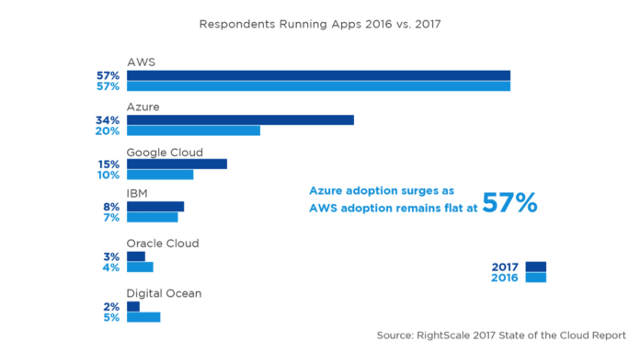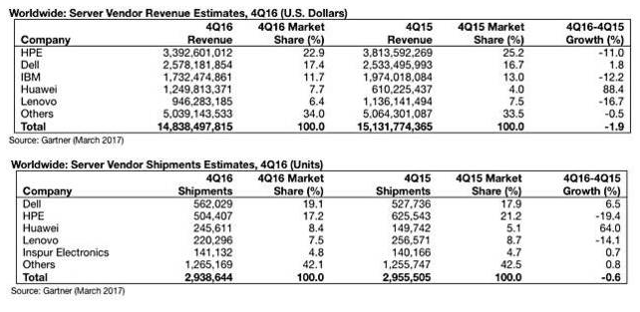SourceCast: Episode 62: Google is growing up
Supplier Report: 3/11/2017

OK Google… you have caught my attention. The “more-than-just-search” company that mere months ago was reported to be desperate for corporate customers, is finding their groove. Apple, Verizon, and SAP have all recently joined their cloud platform. Was Amazon’s little hiccup Google’s gain? Also what is the company doing with their chat platform?
IBM made news for deepening their relationship with Box and for developing a strategic AI partnership with SalesForce. But it wasn’t all good news this week for big blue, the state of Pennsylvania is suing IBM for a seemingly botched 2006 systems implementation.
Acquisitions
- Google confirms its acquisition of data science community Kaggle
The company made the announcement at its Google Cloud Next conference this morning in San Francisco, while not disclosing the terms of the acquisition. But it’s not all that surprising that Google would want to snap it up. With hundreds of thousands of data scientists on the platform, it would give Google the immediate ability to broaden its reach within the AI community. As it increasingly goes head-to-head with Amazon on the cloud computing front, it’s going to need as much of an edge as it can get.
- Amazon acquires Thinkbox to bolster AWS offerings
Amazon has acquired Thinkbox Software, a firm that provides tools for media and design content creation. The company announced in a brief blog post that it will be a part of Amazon Web Services. The terms of the deal weren’t disclosed.
The acquisition comes just a few weeks after AWS launched Chime, a videoconference call service. Both moves suggest AWS, which is already a powerhouse when it comes to infrastructure services, is aiming to provide customers with a more robust cloud services stack.
http://www.zdnet.com/article/amazon-acquires-thinkbox-to-bolster-aws-offerings/
- Amazon’s AWS acquired meeting productivity startup Do to expand Chime
Amazon has quietly made one more acquisition to build out the productivity services on its cloud platform AWS. The company has acquired Do.com, a startup that had built a platform to make meetings more productive by doing things like managing notes in preparation for them, and creating reports for those who were not there, as well as organising the meetings themselves. Amazon is rolling it into Chime, a new communications suite for businesses that it launched last month and offers via AWS.
https://techcrunch.com/2017/03/08/amazon-can-do-chime/?ncid=rss
- HPE to pay $1 billion for Nimble Storage after cutting EMC ties
Nimble Storage offers converged flash arrays with predictive software for provisioning to speed up storage performance. The offerings will work alongside technology that HPE acquired from 3Par, which also is centered around provisioning.
The predictive analytics technology provided by Nimble Storage is mainly targeted at small and medium-size business, but also fits into HPE’s larger focus on data-center deployments for applications like databases and high-performance computing. Many of those applications are being executing in-memory or on flash drives, and Nimble’s technology helps orchestrate faster execution of applications in all-flash arrays.
HPE doesn’t traditionally care much about the SMB, had never had great midmarket offerings, but loves the large enterprise. HPE does best when dealing with people who measure their datacenter footprint in acres. Pure’s customers are more in line with HPE’s approach to life, and isn’t afraid of spending a couple billion extra if it gets them what they want. So why did HPE buy Nimble?
And:
This leads me back to InfoSight. Tintri, Tegile, Pure and Nimble all have analytics packages. Among them, InfoSight is the best. Personally, I rather like Tintri’s analytics, and have never had a need to look beyond them, but having spent the past 24 hours playing with all offerings as well as interrogating customers, it’s clear that Nimble is the leader here.
https://virtualizationreview.com/articles/2017/03/09/hpe-buys-nimble.aspx
Artificial Intelligence
- IBM-Salesforce deal will bring Watson data into applications
Connecting IBM’s Watson to Salesforce will allow companies to combine public information with insights on data they control, then bring those into Salesforce to better personalize product recommendations. According to a press release, one use could be collating information about local shopping patterns from Watson with precise customer preferences from Salesforce to send targeted marketing emails.
- ‘Artificial Intelligence’ Has Become Meaningless
I asked my Georgia Tech colleague, the artificial intelligence researcher Charles Isbell, to weigh in on what “artificial intelligence” should mean. His first answer: “Making computers act like they do in the movies.” That might sound glib, but it underscores AI’s intrinsic relationship to theories of cognition and sentience. Commander Data poses questions about what qualities and capacities make a being conscious and moral—as do self-driving cars. A content filter that hides social media posts from accounts without profile pictures? Not so much. That’s just software.
- DeepMind says no quick fix for verifying health data access
Since 2015, the company has inked multiple agreements with U.K. NHS Trusts to gain access to patient data for various purposes, some but not all for AI research. The most wide-ranging of DeepMind’s NHS data-sharing arrangements to date, with the Royal Free NHS Trust — to build an app wrapper for an NHS algorithm to identify acute kidney injury — caused major controversy when an FOI request revealed the scope of identifiable patient data the company was receiving. DeepMind and the Trust in question had not publicly detailed how much data was being shared.
Patient consent in that instance is assumed (meaning patients are not asked to consent), based on an interpretation of NHS healthcare data-sharing guidelines for so-called “direct patient care” that has been questioned by data protection experts and criticized by health data privacy advocacy group MedConfidential.
Cloud
- Google announces significant partnership with SAP at Google Cloud Next Conference
But Google isn’t the only party who benefits from this arrangement. As Ray Wang, founder and principal analyst at Constellation Research pointed out, SAP needs to get the HANA database distributed on as many platforms as it can. That means AWS, Microsoft, IBM, Google and Oracle.
https://techcrunch.com/2017/03/08/google-announces-significant-partnership-with-sap-at-google-cloud-next-conference/?ncid=rss
Also:
Google lures Verizon away from Microsoft for cloud services, enhances competitive business services profileVerizon has migrated over 150,000 of its employees to Google’s G Suite product.
Citing a person familiar with the agreement, a Bloomberg report revealed that before it worked with Google Verizon had been using Microsoft’s Office app suite.
http://www.fiercetelecom.com/telecom/google-lures-verizon-away-from-microsoft-for-cloud-services-enhances-competitive-business

So… Verizon is about to buy Yahoo, but they are using Gmail? Bwahaha. - Is Apple Ramping Up for a Cloud Fight with Amazon?
A hint that Apple could be up to something in the cloud space came last year when Business Insider reported that the company had moved a portion of its cloud business from AWS to Google Cloud. Perhaps the company made the move to see if one of the services was better than the other. If Apple is working on its cloud as reported, it appears the company feels that none of its current cloud providers is offering the best service.
Because they depend on third-party clouds, Apple services such as iTunes, iCloud, the App Store, and Maps have suffered from sluggish connections, outages, and other disruptions. Apple seems to believe that taking charge of its cloud would put an end to these challenges.
http://marketrealist.com/2017/03/is-apple-ramping-up-for-a-cloud-fight-with-amazon/
- How Cisco wants to become the Switzerland of the cloud
“Most customers will use multiple clouds,” explains Gori. He notes that up to 85% of customers recently surveyed by Cisco were using some sort of public or private cloud, yet only 3% say they have an “optimized” cloud strategy. A majority of those respondents plan on using multiple cloud endpoints too. “In this world of many clouds, we think there’s a desire to use analytics, management and security capabilities across the board, across multiple clouds,” he says. An infrastructure and management control plane that works across several end points will “glue these environments together,” Gori says.
- No, IBM and Microsoft Can’t Easily Oust AWS from its Pole Position in Cloud Computing
As of 2017, nearly half of the market is with Amazon, and that says a lot about their strength. The fact that they’re holding on firmly to their market share in an industry that is growing in double digits should tell you what you need to know.
http://1reddrop.com/2017/03/04/ibm-microsoft-cannot-easily-oust-aws-top-spot-cloud-computing/

It doesn’t look like AWS is growing, but the entire cloud market increased by 20% and AWS kept their share. - AWS To Move Into Call-Center Industry With New Cloud-Based Tools
The programs will incorporate Amazon’s digital assistant, Alexa, to answer some questions via phone and text message. It also will use Lex, a chatbot-building service that uses the same technology as Alexa, and text-to-speech program Polly, according to the report.
The suite of tools will allow customers to build their own customer-service programs using bots and voice control, with the ability to learn and adapt to specific industries. The new products could be announced as soon as mid-March, according to the report.
- Hotmail, Outlook and Skype down as Microsoft suffers ‘authentication outage’
MICROSOFT IS SUFFERING an ‘authentication outage’ that has left users of Hotmail, Outlook and Skype locked out of their accounts.
Users trying to access their accounts are being told that their password is incorrect or that their account doesn’t exist at all, mimicking recent issues suffered by Yahoo Mail users.
Datacenter
- IBM Aims to Build the First Commercial Quantum Computer in ‘the Next Few Years’
The computing industry giant hopes that these updates will encourage researchers and other interested parties to use their experimental quantum computing system to build more sophisticated applications. “While technologies like AI can find patterns buried in vast amounts of existing data, quantum computers will deliver solutions to important problems where patterns cannot be seen and the number of possibilities that you need to explore to get to the answer are too enormous ever to be processed by classical computers,” IBM explained.
IBM’s goal is to build quantum systems with roughly 50 qubits in the next few years. Once we have those, we’ll be able to truly begin to harness the power of quantum computing, and the applications are endless. Everything from medicine and finance to cloud security and even the modern technological era’s golden child of AI will be faster and more advanced.
https://futurism.com/ibm-aims-build-the-first-commercial-quantum-computer-in-the-next-few-years/
- IBM Puts 1 Bit Of Data On A Single Atom
Instead of mangling how it works, I’ll just quote IBM: “The world’s smallest magnet, similar to a magnet on a refrigerator, also has a north and south magnetic pole, but it consists of just a single atom of the element holmium. The single holmium atom is attached to a carefully chosen surface, magnesium oxide, which makes its north and south poles hold in a stable direction even when disturbed, for example, by other magnets nearby. The two stable magnetic orientations define the “1” and “0” of the bit. A sharp metal needle of a custom microscope introduces a current that flips the magnetic north and south poles of the atom and thus changes it between “1” and “0”. This corresponds to the “write” process in a hard-disk drive. Scientists can then measure the magnetic current passing though the atom to determine whether its value is “1” or “0”. This is the “read” process. More about the atom’s magnetic properties was learned using a new sensing technique introduced in a companion paper published earlier this week in the peer-reviewed journal, Nature Nanotechnology. The quantum mechanical technique called “spin resonance” allowed the researchers to use a single iron atom as a sensor to measure the magnetic field of each holmium atom.
http://www.storagereview.com/ibm_puts_1_bit_of_data_on_a_single_atom

Software/SaaS
- Face-off: SAP vs. IBM for talent management
According to user reviews compiled by IT Central Station, SAP SuccessFactors and IBM Kenexa each have their fans, who say the cloud-based software helps them keep track of recruiting efforts, job applicants, employee onboarding and training. But users also say the products have room for improvement in areas such as workforce analytics, social media integration and vendor tech support.
- Google challenges Slack, Microsoft and Amazon with new Hangouts Meet and Chat
Chat could appeal to existing Google G Suite users thanks to integration with Google services including Drive and Docs, plus advanced search features. It also includes a bot called @meet that lets users use natural language to automatically schedule meetings. With Hangouts Meet, the company is promising to simplify the process of joining online meetings, supporting video conferences with as many as 30 people.
http://www.geekwire.com/2017/google-challenges-slack-microsoft-amazon-new-hangouts-meet-chat/
Other
- HPE Realigns Its Technical Services Unit as Pointnext
Hewlett Packard Enterprise has redesigned its tech services division to focus specifically on that ubiquitous trend: digital transformation of enterprise IT shops.
As of March 2, the Palo Alto, Calif.-based IT giant is calling this team Pointnext. It will utilize the expertise of more than 25,000 specialists in 80 countries covering 30 languages and spanning a range of disciplines–from cloud consulting experts to operational services experts.
Because selling off a massive amount of assets and spin-merging entire divisions isn’t confusing enough, they are going to re-brand an internal team.
http://www.eweek.com/enterprise-apps/hpe-realigns-its-technical-services-unit-as-pointnext.html - Pennsylvania sues IBM over $170M jobless claims contract
The lawsuit said the technology and consulting giant was paid $170 million, but had delivered a failed project by the time the state let the contract expire in 2013. At that point, the project was nearly four years behind schedule and $60 million over budget, the lawsuit said.
IBM had an obligation to ensure that all elements of the project were coordinated well and completed competently and on time, the lawsuit said.
- Charleston health care startup PokitDok lands $5 million investment from life insurance company
PokitDok said Thursday it had pulled down capital from New York-based Guardian Life Insurance Co. of America, a deal intended to boost the company’s new system for managing patient records.
In a securities disclosure filed late last month, the company said it had raised $5 million with plans to raise $2.5 million more. PokitDok says it expects some of its existing investors to join the round.
Photo: Francis Daniel
SourceCast: Episode 61: Cloud Turbulence
Supplier Report: 3/4/2017

Amazon Web Services had a bad day this week, and when AWS has a bad day, so does the rest of the internet. AWS had a 4-hour outage on Monday caused by human error. Later in the week, the company reported that they have put processes in place to prevent this type of issue from occurring again.
IBM is making news for gaining a patent for out-of-office email responses. IBM then made news for being ridiculed for attempting to patent basic technology that has been around for over a decade. Big blue made news a third time for offering the patent up for public use.
Acquisitions

No acquisitions for two weeks in a row…
Artificial Intelligence
- Afraid of A.I. taking your job? Yep, you likely are
Only 4% of 2,000 people surveyed said they thought emerging technologies would make their jobs easier, while 48% of those familiar with the idea of disruptive technologies fear it will cause layoffs in their industry and more than 38% said it might cost them their jobs personally. This is according to a new study from SelectHub, a company focused on helping enterprises make technology decisions.
Cloud
- The day Amazon S3 storage stood still
By now you’ve probably heard that Amazon’s S3 storage service went down in its Northern Virginia datacenter for the better part of 4 hours yesterday, and took parts of a bunch of prominent websites and services with it.
It’s worth noting that as of this morning, the Amazon dashboard was showing everything was operating normally.
Additional Background:
Amazon S3 is used by around 148,213 websites, and 121,761 unique domains, according to data tracked by SimilarTech, and its popularity as a content host concentrates specifically in the U.S. It’s used by 0.8 percent of the top 1 million websites, which is actually quite a bit smaller than CloudFlare, which is used by 6.2 percent of the top 1 million websites globally – and yet it’s still having this much of an effect.
Information on S3’s historical uptime:
To provide some additional perspective, CloudHarmony, a service that tracks cloud outages reports that S3 has typically exceeded its Service Level Agreement (SLA), which promises that the service will be up 99.9 percent of the time and offers refunds for those times when it’s not. CloudHarmony found that in most cases S3 has achieved 100 percent annual availability since the company began monitoring cloud services in 2014. The notable exception was an S3 outage in August, 2015.
https://techcrunch.com/2017/03/01/the-day-amazon-s3-storage-stood-still/?ncid=rss
The root cause was human errorAmazon apologized for the disruption on the AWS services page. It writes that a Simple Storage Service (S3) engineer was debugging an issue causing the S3 billing service to run slowly. They “executed a command which was intended to remove a small number of servers for one of the S3 subsystems that is used by the S3 billing process.”
“Unfortunately, one of the inputs to the command was entered incorrectly and a larger set of servers was removed than intended. The servers that were inadvertently removed supported two other S3 subsystems. One of these subsystems, the index subsystem, manages the metadata and location information of all S3 objects in the region.”
http://www.techspot.com/news/68381-cause-amazon-web-service-failure-resulted-parts-internet.html
- AWS Taking On Microsoft, Google with Productivity Suite
Sources told The Information that AWS is still in the early development stages with its productivity suite and hasn’t ironed out exactly what apps it would include. The company is reportedly working to upgrade its existing WorkMail and WorkDocs to appeal to more corporate customers.
http://www.geekwire.com/2017/amazon-may-take-microsoft-google-new-aws-productivity-suite/
- Box’s Levie touts positive cash flow
The company celebrated its first quarter as a free cash flow (FCF) positive business, with CEO Aaron Levie characterizing this as an “inflection point” in a call with TechCrunch. FCF was $10.2 million for the quarter, which they say is a $30 million gain year-over-year.
But Wall Street was disappointed that Box cautioned its first-quarter earnings would likely lose 14 to 15 cents per share, worse than the negative 12 cents investors are watching for.
https://techcrunch.com/2017/03/01/boxs-levie-touts-positive-cash-flow/?ncid=rss
Datacenter
- Why so sad HPE, IBM, Lenovo? Server sales? Let’s see… ah. Oh dear
Overall, according to Gartner research VP Jeffrey Hewitt: “x86 servers continue to be the predominant platform used for large-scale data center build-outs across the globe, and the growth of integrated systems (including hyperconverged integrated systems), while still relatively small as an overall percentage of the hardware infrastructure market, also provided a boost to the x86 server space for the year.”
https://www.theregister.co.uk/2017/03/02/server_market_shrinks/

- IBM flash storage key to turnaround, says GM Walsh
Look at how you use data to drive your business through better insights. Say you’re doing a poll to get some analytics. How do you run the poll? How do you tell the system, ‘Tell me … this answer,’ and then put some understanding around the answer. Cognitive is placing reason around the data so you understand it and get help with decision-making. Those applications takes a lot of CPU and memory, so flash media allows you to do those things better.
- HPE’s struggles might have something to do with Microsoft
While Microsoft has been deploying some white-box servers for years, the company seems to have stepped up its efforts lately. In October, the company unveiled Project Olympus, a design for modular servers featuring internally-designed motherboards and power supplies. Olympus is being contributed to the Open Compute Project (OCP), a Facebook-led initiative to create open-source designs for low-power data center hardware.
Software/SaaS
- Zipnosis, PokitDok intertwine claims processing and telemedicine
“PokitDok designed claims administration tools to support emerging digital health companies like Zipnosis,” said Lisa Maki, co-founder and CEO of PokitDok. “This engagement really hit our sweet spot: working to strip costs and unproductive time out of clinical visits. We leveraged our HIPAA-compliant data connections to health insurers and payers to facilitate this new workflow. The result is quality care delivery with improved efficiency.”
Other
- IBM Shamed Into Giving Away Awful Patent On Email Out-Of-Office Messages
So IBM spent tons of money not just applying for this patent, but arguing back and forth with the PTO for years over why it truly deserved this silly patent… and then it got it at the beginning of this year. And less than two months after receiving the patent, when the EFF publicly shames IBM over the patent, the company then says “oh, hey, we dedicate it to the public.” That makes sense.
Photo: AJ Montpetit


